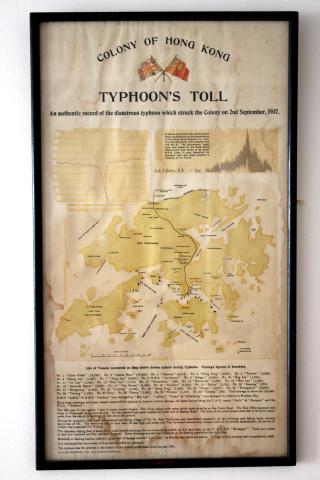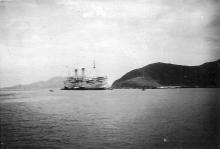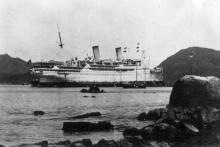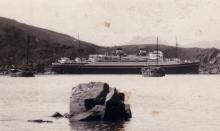Max wind speed: gust of 130 knots
Deaths: about 11,000
Source:
- Wind speed from table 2.5 and deaths from Table 2.6 in http://www.hko.gov.hk/publica/gen_pub/WeatheringTheStorm-2.pdf
Date(s) of this event
-
Photos of this event:
(see more)Photos of this event:
Appears on Timeline




Comments
1937 Typhoon
Effects on shipping and damage to vessels can be viewed here
Photo No 2
It appears to me to be further round facing east across Causeway Bay.
Typhoon Hong Kong September 1937 - film footage from BFI
This remarkable short silent film can be found here: https://player.bfi.org.uk/free/film/watch-typhoon-hong-kong-september-1937-1937-online Please note that for copyright reasons the film is accessible only from UK-based computers.
The British Film Institute (BFI) introduction to the film states that it was shot mostly on the morning immediately after the typhoon. It shows the scale of the havoc wreaked by the storm: “ships run aground, houses levelled, thatched roofs blown away, collapsed piers, women and children clearing rubble, and many giant ocean liners - half submerged like bath toys”.
People are seen surveying the damage and women and children – mostly barefoot – are literally picking up the pieces, salvaging firewood wherever they can.
A number of ships are shown, including the Chinese steamers An-Lee and Eng-Lee, the Tymeric of Glasgow, and Dutch liner Van Heutsz, which was apparently carrying over 1,000 refugees from the on-going Battle of Shanghai. The fate of these and a number of other merchant and naval vessels is shown here: https://en.wikipedia.org/wiki/List_of_shipwrecks_in_1937#September. It is worth noting that many of those driven ashore are reported as having been re-floated soon afterwards.
Smaller local craft, of course, were also badly affected, with a loss of around 1,800 fishing boats, according to the film’s introduction.
The film shows something of the aftermath of the event, where fallen branches have been cleared to the side of a street, or a pathway through the rubble is already clear for a mother and child to walk along. But as we watch this wonderful, ‘matter-of-fact’ film, we can only imagine the scenes before those streets and pathways were cleared. And we need to keep reminding ourselves of the appalling loss of life that lay behind the devastation we are shown.
Wind speeds during the 1937 typhoon
The text below is quoted from the book A Mountain of Light by Austin Coates:
The major typhoon of 1937 was remembered at North Point for one of those pieces of one-up-manship irresistible to engineers. Raymond Smith [an engineer at Hong Kong Electric Company, said]: ‘Some time prior to the typhoon an anemometer was ordered from home, to be calibrated up to 150 m.p.h. The supplying company wrote back and said that 150 m.p.h. was unnecessary, and that their standard instrument was 100 m.p.h., and they thought that would be sufficient. The Hong Kong Electric Company insisted on 150 m.p.h., and this was eventually supplied.
‘In the 1937 typhoon the pen on the anemometer went off the scale, but by measurement it was estimated that that the wind force was 166.6 m.p.h., and this figure was accepted by the Observatory, whose anemometer did not go up to 150 m.p.h. They were so peeved about it that they ordered an anemometer up to a maximum of 200 m.p.h.’
1937 Typhoon
There is an article in the LIFE magazine from 4. Okt. 1937 with photos.